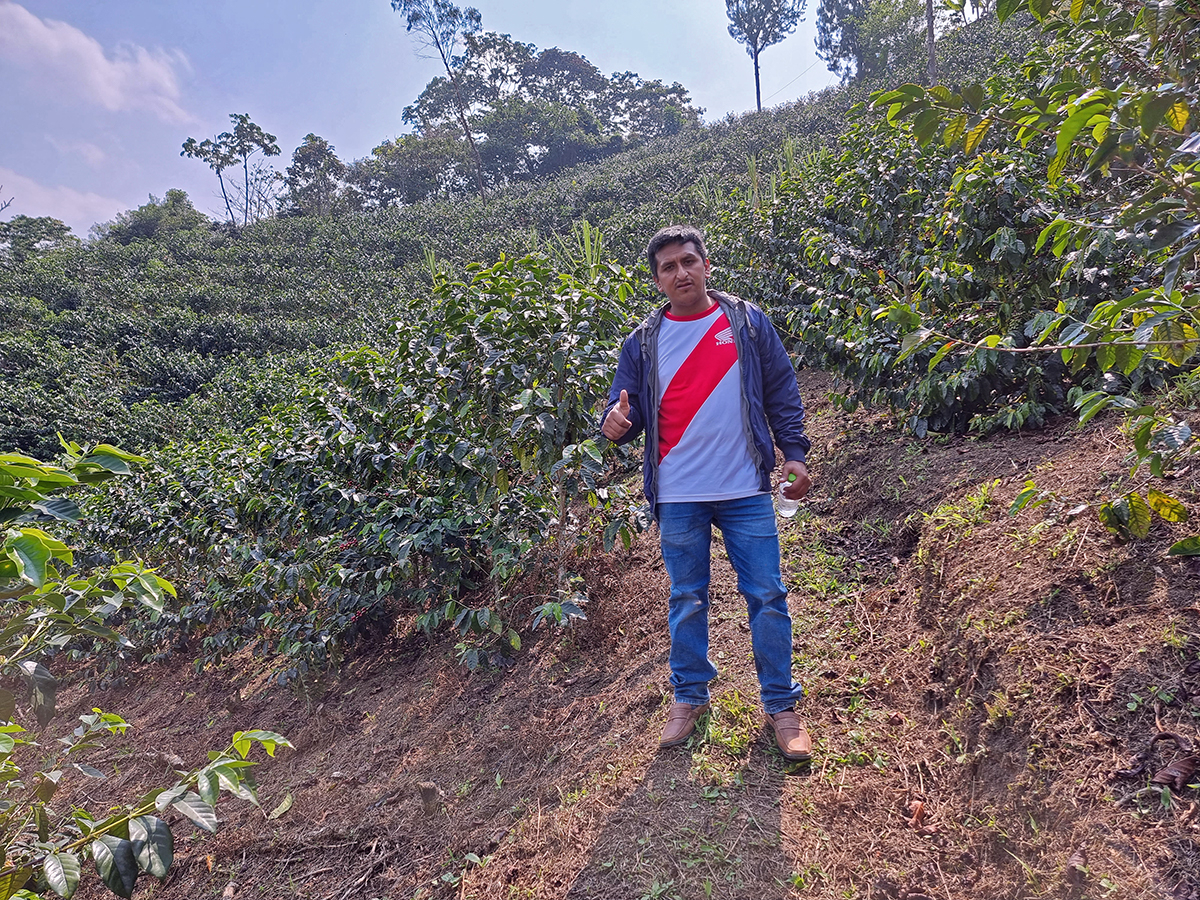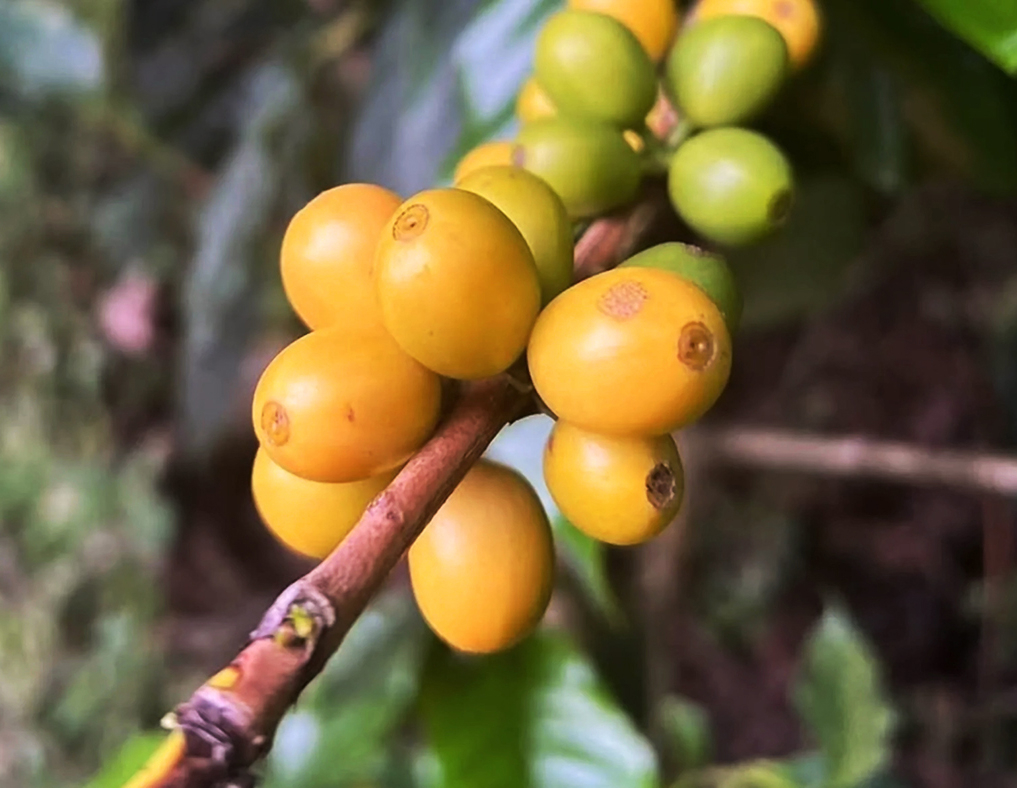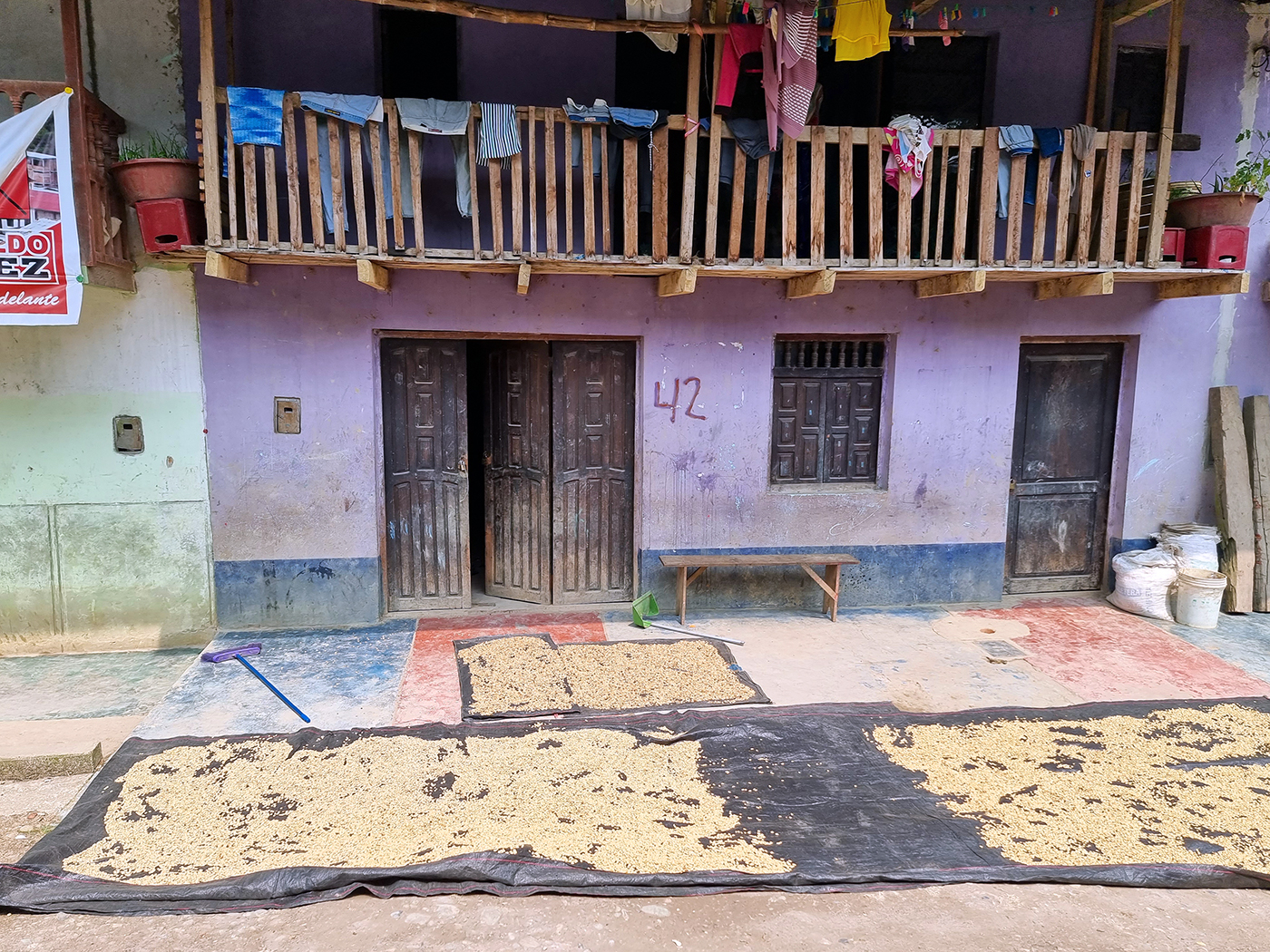












Peru
Cup Notes: Caramel, Hazelnut, Black Tea, Cacao, Red Apple
Introducing for the first time this Peruvian gem, where sweetness, fruitiness, and vibrant acidity meet in perfect balance.
Suggested for espresso and filter
when we roast
We freshly roast to order all coffees on Monday, Wednesday and Friday (excluding national holidays), and ship the same day! Cut-off time is 11:59pm (UTC+1) of the day before the roast day. *We only ship whole beans*
Roger Chilcon Flores cultivates 3 hectares of coffee in the village of El Diamante, in the San José de Lourdes district, all above 1,900 masl. On his land grow both yellow and red Caturra, while some of his family members also manage nearby plots. Although each owns their own farm, Roger takes care of the picking, processing, and drying, guiding the coffee from cherry to finished cup.
El Diamante is one of the closest coffee-producing areas to the city of Jaén, with a strong cooperative presence, particularly at lower elevations. We work with a few coffee-growing families here, on farms ranging from 1,600 to 2,000 masl. Medium-altitude plots are planted mainly with Catuai and Castillo, while higher altitudes feature Bourbon, Caturra, and Typica.
The region is unique: protected forests shelter diverse native flora and fauna, and abundant water sources sustain both the farms and the city. This thriving natural environment not only creates a stunning setting for coffee cultivation but also enriches and stabilizes the soil. The result is a cup with a distinct profile—intensely fruity, bright, and vibrant.

Caturra is a natural mutation of the Bourbon variety, discovered between 1915 and 1918 on a plantation in Minas Gerais, Brazil. Its compact growth, caused by a single gene, earned it the name “Caturra,” derived from the Guarani word for “small,” or “Nanico.”
After its discovery, the Instituto Agronomico (IAC) in Campinas, São Paulo, began selecting the best plants in 1937. Farmers were drawn to Caturra’s smaller size, which allowed them to plant closer together, and its dense secondary branches, which increased fruit production. Through a careful process called mass selection, the top-performing plants were chosen, their seeds combined to create a new generation, and the cycle repeated.
Although Caturra was never officially released in Brazil, it found a new home in Central America. Introduced to Guatemala in the 1940s, it gradually became a staple of the region’s coffee industry over the following decades, spreading to Costa Rica, Honduras, and Panama. For years, it was a reference point for new coffee varieties, and in Colombia, it once made up nearly half of the country’s coffee production—until the 2008 government program encouraged replacing older trees with the rust-resistant Castillo, which carries Caturra genetics.
Caturra also played a central role in intensifying coffee cultivation, allowing higher-density planting and full-sun farms. Its legacy continues in the Catimor family of cultivars, where crosses with the rust-resistant Timor Hybrid produced compact, resilient plants that still influence coffee growing today.
Pache is a natural mutation of the Typica variety, caused by a single gene that keeps the plant smaller, or “dwarf,” allowing farmers to plant it more densely and achieve higher yields. This unique variety was discovered in 1949 on the Brito farm in Santa Cruz Naranjo, Santa Rosa, Guatemala.
From its discovery, Pache was carefully selected through a process known as mass selection. The best-performing plants were chosen, their seeds combined to create a new generation, and the cycle repeated. This process took place across private farms in Guatemala, gradually spreading the variety to other regions and countries, where it continues to influence coffee cultivation today.

The cherries are carefully hand-picked at peak ripeness and left to pre-ferment overnight in bags. The following day, they are depulped and undergo a longer fermentation of 24 to 36 hours, adjusted according to the weather. This extended process of maceration and fermentation develops vibrant fruit notes in the cup, beautifully balanced by the bright citric acidity that comes from the high-altitude environment.
After fermentation, Roger dries the coffee in a ventilated greenhouse on wooden patios lined with plastic, slowly bringing the moisture down below 11%. Once fully dried, the coffee is transported to Jaén and delivered to a local warehouse, ready to continue its journey.
